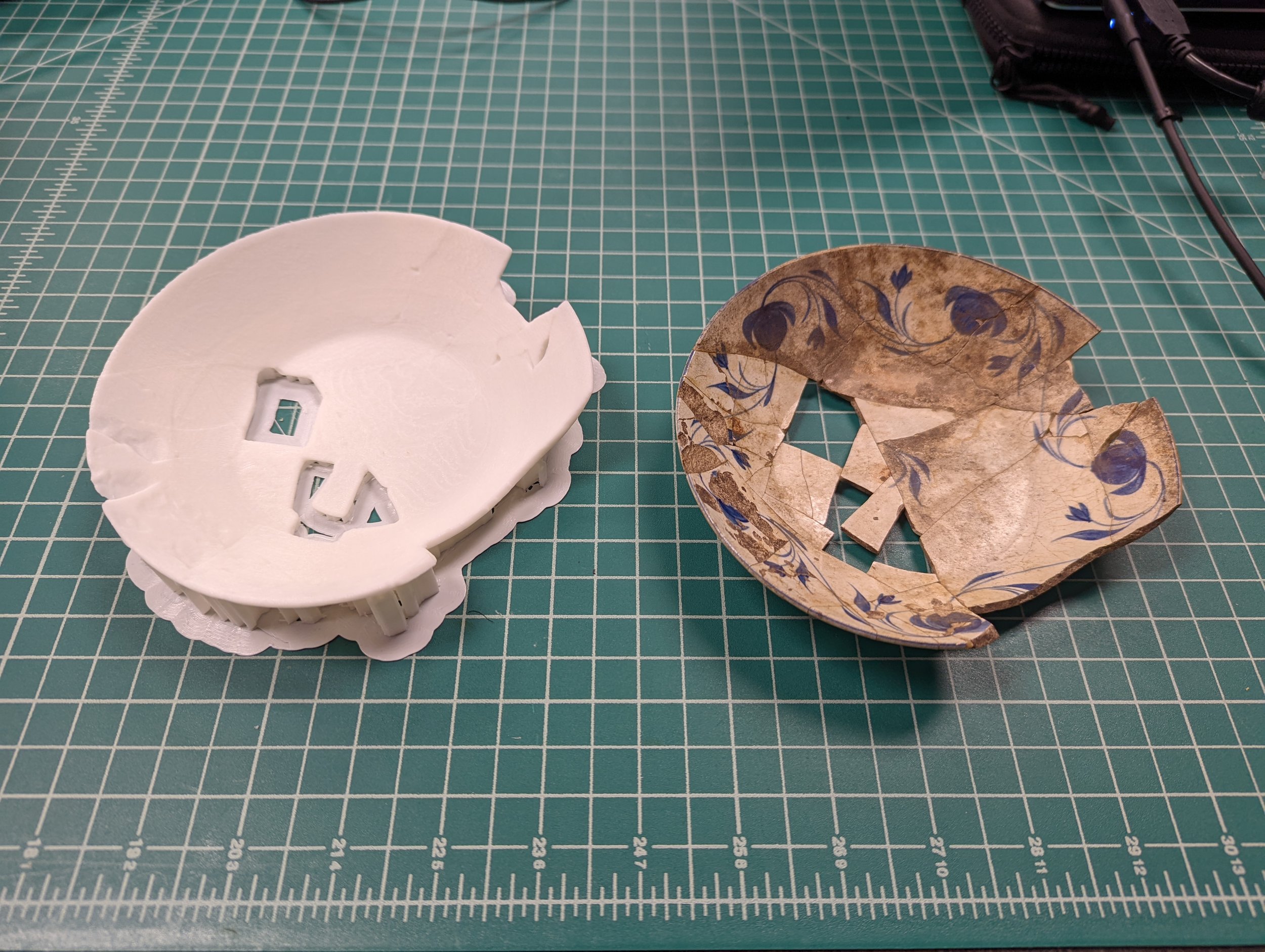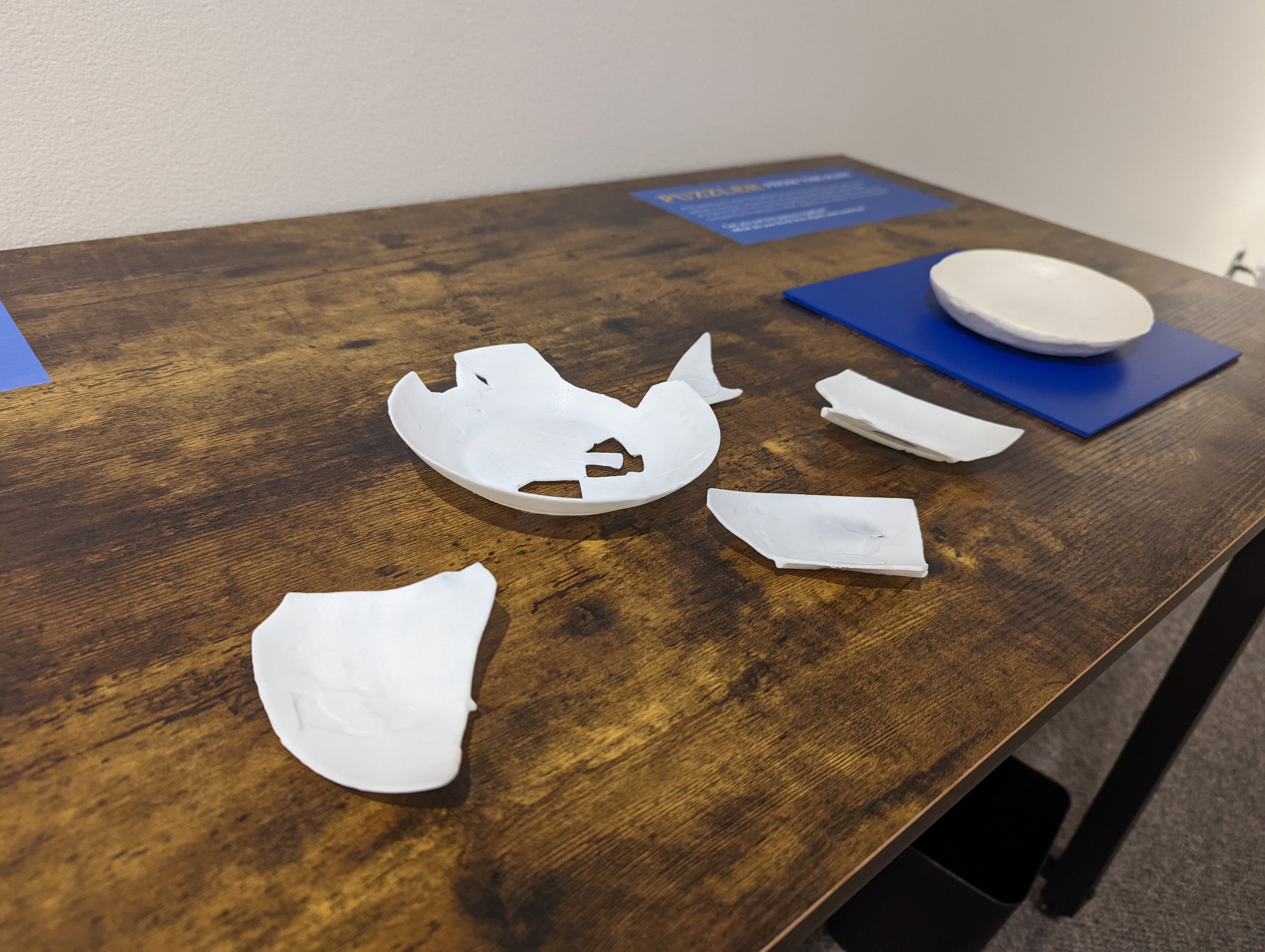The archeological dig at Drummond Island was led by MSU and included the uncovering parts of a prehistoric village site including pieces of earthenware. As an environmental historian, I was most interested in how archeologists had observed the material reality of the area and decided to investigate further. The exhibit consisted of 3-D printed earthenware that would allow visitors to touch and feel the delicate pieces and even try and put them together as they attempted to recreate the original plate. The recreation of a 14,000-year-old artifact into one that visitors could use and manipulate created greater interest and was far more accessible than displaying the original artifacts. Using three-dimensional printing as well as other rendering technologies, historians can bring the fragility and contingency of the past in more accessible and exciting ways. Photos and prints courtesy of Dr. Ethan Watrall (MSU).
More on his process here













